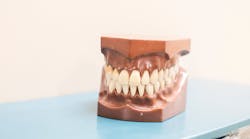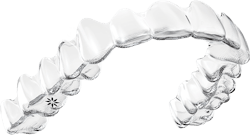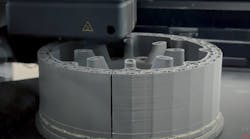Align Technology, the developers of the Invisalign system, has pioneered the use of 3D printing in the dental industry, printing more than 433K individualized clear aligners a day.
With Align’s iTero digital system, dentists can scan a customized mold of the patient’s oral cavity. The intraoral digital scan is then converted into digital files. The digital files set the stage to 3D print shape-engineered aligner molds that Align manufactures using thermo-forming and milling, allowing the teeth to adjust and be guided into place.
“3D printing is one of the main technological innovations driving the evolution of digital dentistry,” says Srini Kaza, Align’s vice president of product innovation. “3D printing allows us to better meet the increasing demand for clear aligner treatment and the growing consumer demand for a highly-customized end product.”
In talking with IndustryWeek, Kaza adds that the use of 3D printing is evolving in several ways. “For many years, 3D printing has been used as a pre-production step to confirm the form and function of a design before going into full production. This can have a huge impact in terms of speed and quality,” he says. “Virtual 3D modeling tools continue to get more sophisticated, so many of the steps that needed a prototype can now be done virtually. There are already many powerful virtual tools for CAD/CAM design, virtual simulations, finite element analysis and CFD to create powerful solutions.”
Kaza also anticipates more complementary use of injection molding and 3D printing. “These technologies are the current standard in terms of cost, throughput and materials properties,” he says. “Injection molding is appropriate when producing millions of the same part. However, 3D printing even at production scales will be appropriate when the goal is mass or part-level customization.”
The Invisalign clear aligner system is a good example of mass customization, a process by which Align produces nearly 500,000 unique parts each day..
Overcoming obstacles
When Align started working with 3D printing as a production process, there were significant challenges. The technology had been mainly developed as a prototyping process, which is still the case in many instances today. “There are many examples of 3D printing being used in larger volume these days, but a true production process like Invisalign requires a production volume of hundreds of thousands of parts a day,” says Kaza.
Automated processing and preparing massive amounts of data, managing a large fleet of printers to make sure a high amount of uptime, consistent quality, data driven and statistical process controls, monitoring machine health and throughput, automating operation of machines with minimal manual intervention are all key components for true production to work. “Many of these processes are standard in a production world – but are not yet mature in the 3D printing world,” says Kaza.
However, 3D printing offers an unprecedented level of control in customization. “In a production process like ours, we don’t have inventory. Each part is customized to the individual patient and built to order,” says Kaza. “3D printing is the only process where such production is possible. There are many challenges associated with building a 3D printing production process, but it’s worth it in the end and in many cases, cannot be substituted with any other process.”





